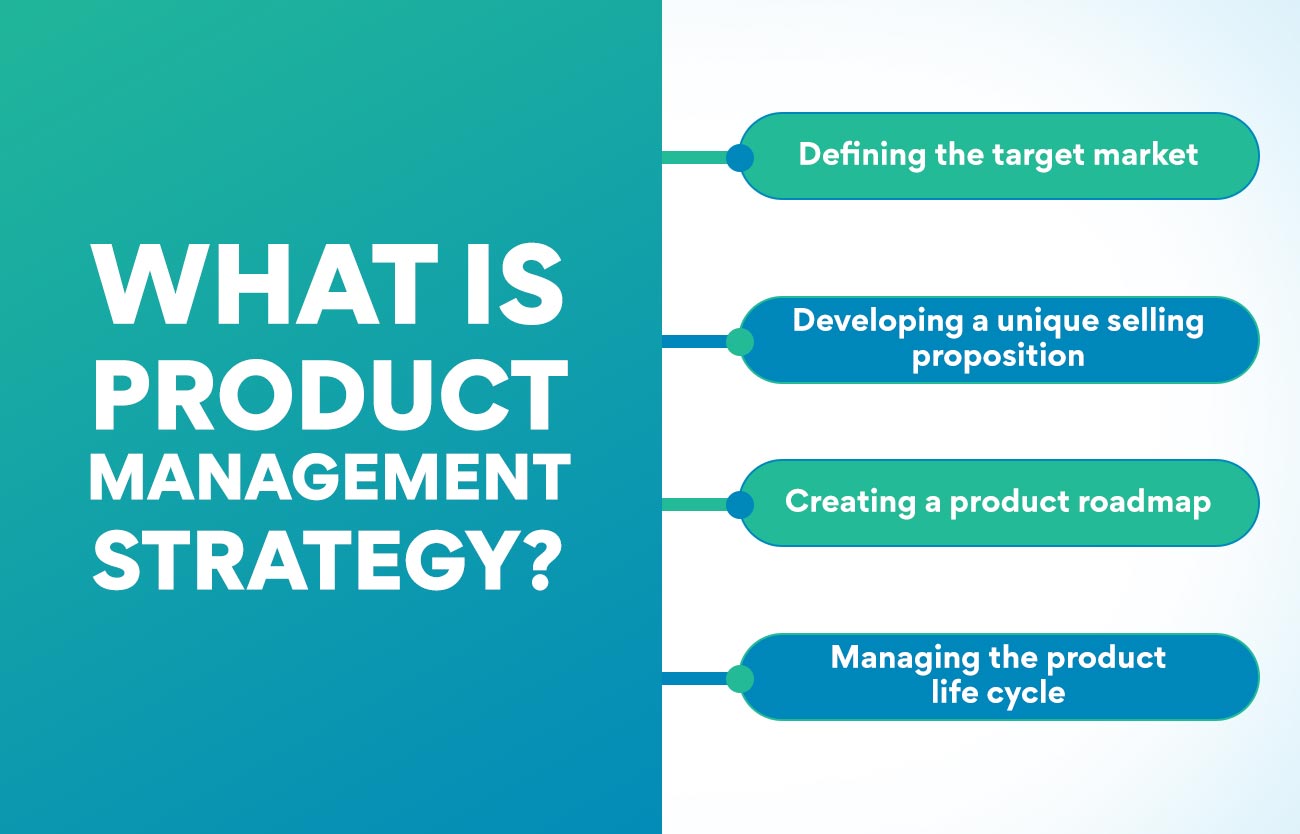What is product management? There are plenty of ways to answer this question, as product management is a broad and complex field. It is the process of creating and bringing new products to market. This includes defining what the product should be, researching what needs it will fulfil, designing and overseeing its production, and then marketing it to consumers. It’s an essential function in any company that works with a view to creating and selling new products.
Product Management: An Overview
Product management is all about the process of making the product up for grabs. It includes everything from research and development to marketing and sales.
Product managers need to ensure that a product meets the needs of its target market and is highly profitable. They need to collaborate with other product development team members, such as engineers, designers, and marketing professionals.
It is a new field in the business world, and it is constantly evolving, helping organisations to ensure the efficiency of the project. As technology advances and markets become more globalised, the role of the product manager will continue to change.
There are many different opinions on what is product management. Some people believe it combines marketing and engineering, while others believe it is its own distinct discipline.
Regardless of what the meaning entails precisely, there is no doubt that it is a vital part of any successful product development team.
Do you also want to be a part of a project management team and oversee the development of a project? Prepare yourself as an efficient product manager with our Advanced Certificate in Operations, Supply Chain, and Project Management, wherein you can learn while you work and make the most of your time. Take a look at the course now!
What Includes In The Product Management Process?
It is the process of developing, managing, and improving products. This includes:
- Identifying customer needs and requirements: This step involves understanding what customers need. The best way to identify customers’ requirements is through market research, surveys, interviews, and focus groups.
- Creating product requirements: Once customer needs and conditions have been identified, product requirements should be outlined. This step involves defining what the product should do and how it should work.
- Developing the product: It is about creating a product that meets the requirements defined in the previous step. It includes designing, prototyping, testing, and manufacturing.
- Managing the product: After the product has been developed, it must be addressed. This includes marketing, sales, customer support, and product training.
- Improving the product: This step is about continuously improving the product. This can be done through customer feedback, market research, and data analysis.
What Are The Benefits of Product Management?
Product management can help to ensure that a company’s products are well-designed, meet customer needs, and are successful in the marketplace. There are many benefits to having a strong product management team, including:
Better Collaboration Among Teams
Product managers typically work closely with other departments within a company, such as engineering, marketing, and sales. This close collaboration can help ensure that all departments work together towards common goals. Product managers can also act as department liaisons, helping to resolve any conflicts that may arise.
For instance, if the sales team is pressuring the engineering team to add a new feature to a product, the product manager can help to assess whether or not the requested element is something that would be beneficial to the development. If it is determined that the requested feature is unnecessary, the product manager can help clear the matter with the sales team.
Improved Customer Satisfaction
Product management is the process of developing and bringing a product to market. It includes identifying customer needs and researching potential solutions to designing and launching the product.
Product managers have a significant role in ensuring that products meet customer needs and exceed their expectations. They are responsible for ensuring that products are developed and delivered on time, within budget, and to the highest possible quality.
It is a critical function in any organisation that develops and sells products. Product managers must ensure that products are catering to the pain points of targeted customers and fulfilling the objectives of the concerned business.
For instance, product managers at Amazon are responsible for ensuring that the products sold on the Amazon website are of the best quality and meet customer needs.
Aligned Market Requirements
Product managers are responsible for ensuring that the product they are responsible for meets the target market’s needs. This includes understanding what features the product should have, what the product should look like, and how the product should be priced.
Product managers are also responsible for creating product requirements documents that detail what the product should be able to do. The engineering team then uses these documents to develop the product.
For instance, the product manager for a new smartphone would work with the engineering team to develop specs for the phone, including what features it should have and what it should look like, after conducting a trend analysis survey. The product manager would then work with marketing to determine the price of the phone that justifies its value and fits in customers’ budget.
Reduce Risks And Potential Threats
Product management involves the process of reducing risks and potential threats to a company’s bottom line. It includes identifying these risks early on, developing mitigation strategies, and monitoring their progress. By doing so, product managers can help keep a company’s products and services safe and successful.
Identifying the risks and threats to a company’s products and services is the first step in product management. It is done through market research, customer feedback, and competitor analysis. Once these risks and threats have been identified, product managers can develop strategies to mitigate them. These strategies can include changes to the product, how it is marketed, or changes to the company’s business model.
For instance, if a product is found to be too risky for a company’s bottom line, product managers may recommend changes to the product itself. This could involve redesigning the product, changing the materials used, or changing how it is manufactured. If a product is not selling well, product managers may recommend changes. It will include changing the product’s packaging, creating new marketing materials, or redesigning the website.
Why is Product Management Essential For Business?
Product management is essential for business because it helps to ensure that products are developed and delivered to meet customer needs and market demands. Product managers play a vital role in ensuring that products are designed, developed, and delivered to meet the needs of target customers and markets.
Product managers also play a key role in ensuring that products are priced correctly and promoted effectively to reach the target market.
Product management is critical in any business that designs, develops, and sells products. Product managers are responsible for a product’s strategy, roadmap, and feature definition. In addition, product managers work with cross-functional teams to bring a product to market.
How Can Product Management Improve Product Development?
Product development can be enhanced by adopting product management in a few ways; below are some of the crucial ones:
- Planning and designing products: A product manager is responsible for planning and designing products. They work with the development team to create a product roadmap, which outlines the features and timeline for the product.
- Managing the development process: A product manager is responsible for managing the development process. They work with the development team to ensure that the product is developed on time and within budget.
- Testing products: Product managers need to test products before they are released to the public. Product managers can ensure that products are tested for quality and performance with product management.
- Launching products: A product manager also manages the launching of products. They work with the marketing team to promote the product and make sure that it is available to the public.
What Is Product Management Strategy?
Product management strategy is the creation and implementation of plans that will achieve an organisation’s objectives. It includes setting goals, developing plans to achieve them, and executing them. The product management strategy must be aligned with the organisation’s overall business strategy.

There are four key elements of product management strategy:
- Defining the target market
- Developing a unique selling proposition
- Creating a product roadmap
- Managing the product life cycle
Defining Target Market
The first step in developing a product management strategy is to define the target market. This includes segmenting the market, identifying the target market’s needs, and determining what they are willing to pay for the product.
How does It help?
Defining the target market, in the beginning, helps product managers in setting goals, developing plans, and executing them. It also ensures that the product management strategy is aligned with the organisation’s overall business strategy.
Developing a Unique Selling Proposition
Product management is all about creating a unique selling proposition (USP) for your product. This USP is what sets your product apart from the competition and makes it attractive to potential customers. To develop a strong USP, you need to understand what your product does better than anything else on the market. Once you know your product’s USP, you can start to craft your marketing and sales strategies around it.
How does it help?
Having a strong USP is essential for any product manager. It’s what will help you sell your product and make it stand out from the competition. By understanding your product’s USP, you can develop marketing and sales strategies that are tailored to your product. It will help you increase sales and grow your business.
Creating A Roadmap
The process of product management begins with the development of a roadmap. A roadmap is a high-level guide for the product team and outlines the vision for the product. It also includes a timeline of milestones and deliverables. The roadmap is updated regularly to reflect changes in the market and feedback from users.
How does it help?
A roadmap helps to align the team on the vision for the product and keeps everyone focused on the most important tasks. It also ensures that all stakeholders have a clear understanding of the product roadmap and can provide input at key points in the development process.
Managing Product Lifecycle
Product management is the process of managing the development and release of a product. This includes planning, execution, and monitoring throughout the product lifecycle.
Product managers need to collaborate with various teams, such as marketing, sales, engineering, and support, throughout the entire lifecycle of the product. They also need to communicate frequently with customers to ensure that the product meets their needs.
Role Of Product Managers
Product managers play a pivotal role in the success of a product. They are responsible for ensuring that the product meets the needs of the customer as well as the company. Product managers also work with the engineering team to ensure that the product is developed according to the requirements of the customer. Product managers also work with the marketing team to ensure that the product is promoted effectively.
Product managers are also responsible for the overall success of the product. They need to have a clear understanding of the market, the customer, and the competition. These professionals must articulate the value proposition of the product. Product managers must possess a strong understanding of the product development process. They work closely with the engineering team and the marketing team to get the work done with optimum resources. For this, product managers need to have strong communication skills.
Conclusion
In conclusion, product management is a process that helps companies develop and market successful products. It involves setting goals, researching the market, creating prototypes, and working with cross-functional teams to bring the product to market.
There are many different opinions on what product management entails, but the bottom line is that it is a critical function in any company that wants to develop and market successful products. For pursuing a career in product management or fine-tuning your skills, it’s important to have a solid understanding of the basics. Looking to brush up on your skills and run through the basics again? Check out our Advanced Certificate in Operations, Supply Chain, and Project Management, which can help you understand the nitty-gritty of product management in detail.






_1668670867.jpg)





















